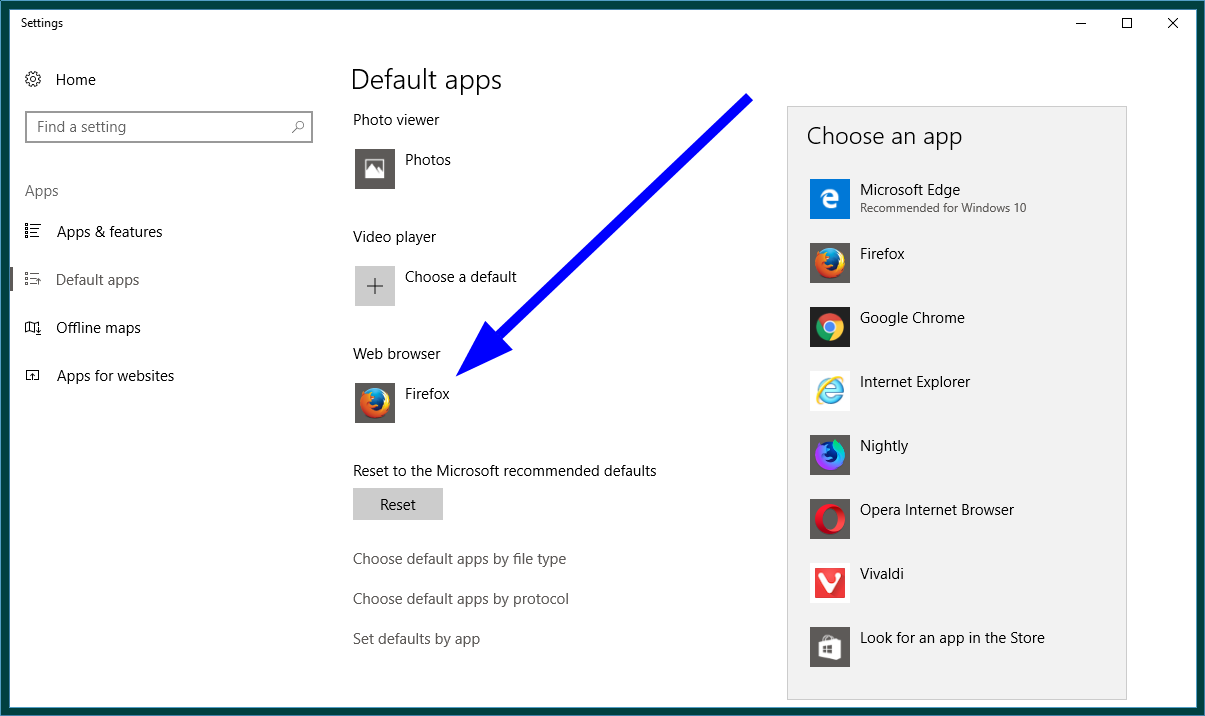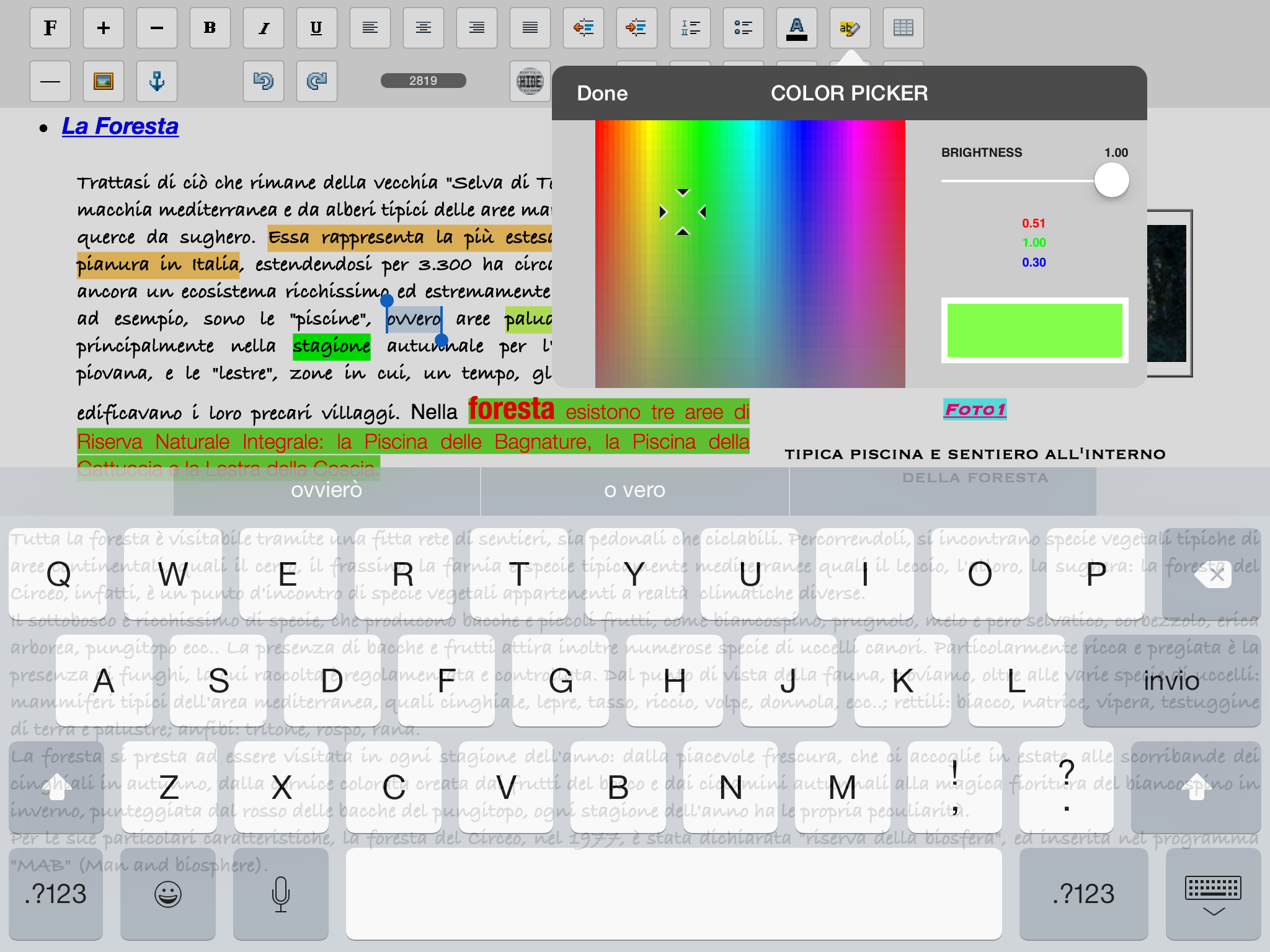

- Iword default brower pc update#
- Iword default brower pc code#
- Iword default brower pc Pc#
- Iword default brower pc windows#
Once again, the above code uses Late Binding techniques and has no application specific dependencies making it fully portable. , vbOKOnly + vbCritical, "An Error has Occurred!" Switch(Erl = 0, "", Erl 0, vbCrLf & "Line No: " & Erl) _ "Error Description: " & Err.Description & _ "Error Source: GetDefaultBrowser" & vbCrLf & _ "Error Number: " & Err.Number & vbCrLf & _ MsgBox "The following error has occurred" & vbCrLf & vbCrLf & _ If Not oShell Is Nothing Then Set oShell = Nothing GetDefaultBrowser = Left(GetDefaultBrowser, InStr(GetDefaultBrowser, ".") - 1) 'firefox 'Trim off the exe and only return the filename GetDefaultBrowser = Right(aCommand(1), Len(aCommand(1)) - InStrRev(aCommand(1), "\")) ' firefox.exe 'Parse the returned value to extract just the exe filename SCommand = oShell.RegRead("HKEY_CLASSES_ROOT\" & sProgId & "\shell\open\command\") 'Cross-reference the sProgId to get the exe associated with it "\UrlAssociations\https\UserChoice\ProgId") SProgId = oShell.RegRead("HKEY_CURRENT_USER\Software\Microsoft\Windows\Shell\Associations" & _ Set oShell = CreateObject("WScript.Shell") ' Req'd Refs: Uses Late Binding, so none required ' Copyright : The following is release as Attribution-ShareAlike 4.0 International ' Purpose : Returns the name of the System's Default Web Browser

' Author : Daniel Pineault, CARDA Consultants Inc. From the data collected, I was able to determine that the actual registry key of interest was HKEY_CURRENT_USER\Software\Microsoft\Windows\Shell\Associations\UrlAssociations\https\UserChoice\ProgIdįrom there, it then just became a question of building a wrapper function to read the value, cross reference that value to isolate the actual exe filename.īelow is my solution to identifying the default web browser on a PC: '.
Iword default brower pc Pc#
I decided to profile my PC while I made changes to my Default Apps. My Solution to Find the Default Web Browser The easiest way to get started is with Azure Cloud Shell, which automatically logs you in.With a local install, you can sign in interactively through your browser. Some mentioned checking HKEY_CURRENT_USER\Software\Microsoft\Windows\CurrentVersion\Explorer\FileExts\.html\UserChoiceīut as I said, the returned values didn’t match my settings when I’d make changes to my default app. Azure PowerShell supports several authentication methods. Some posts were mentioning checking the HKEY_CLASSES_ROOT\http\shell\open\command\Īnd/or HKEY_CLASSES_ROOT\https\shell\open\command\

I went out digging and the information I was finding simply didn’t work when I tested it.
Iword default brower pc windows#
Click that option and expand the information under Windows information to see your build number.Related to a recent question made to my VBA – Open a URL in FireFox/Chrome article and out of curiosity, I decided to figure out how one could determine which Web Browser was defined as the default web browser for a PC. If you want to know what version you have installed right now, you can head into the Settings app and from the home page, scroll down to About. Specifically, you're going to want to be on Windows 111 build number 22000.593 or higher. As such, the first thing we recommend you do, if you haven't yet, is make sure you're running the latest version of Windows 11. However, Microsoft has released some cumulative updates over the past few months, and with them, changing browsers has become easier. For a browser, for example, you'd have to choose the default app for each protocol or file association. We've talked about this before, but when Windows 11 was first released, it made it much harder to change certain default apps, especially the browser.
Iword default brower pc update#
Because of that, one of the first things you may want to do is update your PC. Microsoft initially made it very hard to change the default browser on Windows 11, but thankfully, things have gotten a little better with recent updates.


 0 kommentar(er)
0 kommentar(er)
